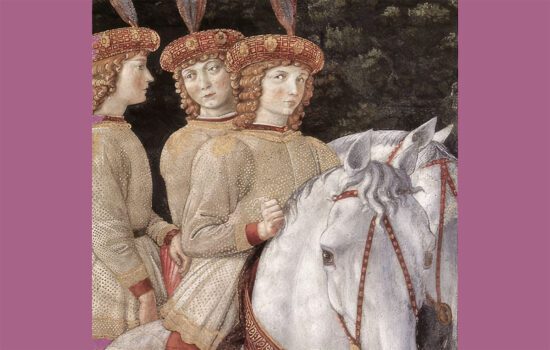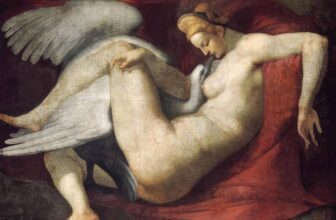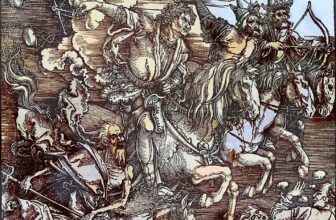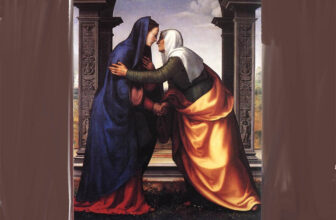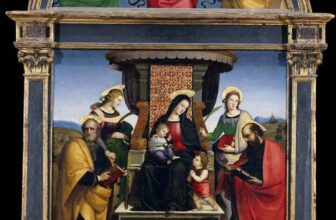What are Benozzo Gozzoli’s Most Famous Paintings
Shopping Ads: Invest in Hidden Masterpiece: Rare Antique Oil Paintings For Sale. Limited Originals Available 💰😊 Are you looking for authentic hidden masterpiece? Explore old master antique oil paintings from the Renaissance and Baroque eras. From 16th-century portraits to 18th-century landscapes. Authenticity guaranteed, Old Master antique oil paintings for sale. Shop Now! 🎨 Renaissance And Baroque Art Old Master Portrait Paintings Landscape Antique PaintingsIn the golden age of the Italian Renaissance, when Florence thrived with art, power, and philosophy, one name emerged as a storyteller with brush and color, Benozzo Gozzoli. Though less celebrated than his contemporaries like Botticelli or Leonardo da Vinci, Gozzoli’s works are vibrant testaments to the elegance of religious devotion, the splendor of princely courts, and the enduring charm of narrative painting. His legacy is not merely confined to canvas and fresco; it resides in chapels, monasteries, and walls that pulse with spiritual reverence and courtly magnificence.
This is the story of Benozzo Gozzoli, the man who painted kings, angels, and saints as if they danced through paradise.
A Painter from the Tuscan Heartland
Benozzo Gozzoli was born around 1421 in Scandicci, a small town near Florence, Italy. His original name was Benozzo di Lese di Sandro, but over time he became known simply as Benozzo Gozzoli, a name now immortalized in the chronicles of Renaissance art.
Gozzoli began his artistic journey as an apprentice to Fra Angelico, the Dominican friar-painter whose work embodied serenity and spiritual purity. Under Fra Angelico’s wing, Gozzoli worked on the frescoes at San Marco in Florence, contributing to scenes rich in clarity and gentle divine grace. This foundational experience deeply shaped his style, infused with religious sentiment but layered with vivid, humanistic detail.
Yet unlike Fra Angelico, Gozzoli leaned into the theatrical and the decorative. Where Fra Angelico painted the heavenly, Gozzoli brought heaven to earth.
What Is Benozzo Gozzoli Known For?
Benozzo Gozzoli is best known for his frescoes, particularly those brimming with color, detail, and movement. His art bridges Gothic elegance and Renaissance naturalism, showing a love for pageantry, lavish landscapes, and vivid human expression.
While many Renaissance painters strove for realism and anatomical precision, Gozzoli remained a storyteller. He created visual epics filled with symbolism, historical allegory, and layers of sacred and secular narrative. His angels weren’t just divine; they were courtly, bejeweled, and often bore the likeness of real nobility.
Gozzoli’s crowning glory, the fresco cycle of the “Procession of the Magi”, remains one of the most beloved Renaissance artworks in Florence, revered not just for its artistic mastery but also for its insight into Medici political propaganda and self-image.
Benozzo Gozzoli’s Most Famous Paintings
1. The Procession of the Magi (1459–1461)
Location: Chapel of the Magi, Palazzo Medici-Riccardi, Florence
Commissioned by: Piero de’ Medici (father of Lorenzo the Magnificent)
This masterpiece is a triumph of Renaissance pageantry. Covering the walls of the private chapel of the Medici family, Gozzoli’s “Procession of the Magi” depicts the three wise men journeying to see the Christ Child, but it is also a thinly veiled portrait gallery of the Medici and their allies. Lorenzo de’ Medici, then a boy, is believed to be painted as one of the Magi.
Unlike traditional religious frescos, this work is bursting with color, gold, silk garments, and lavish trappings. The landscape is Tuscan, the faces are real nobility, and the mood is celebratory. It is both a political homage and a sacred tale, intertwined with courtly elegance.
2. Life of Saint Francis (1450s)
Location: Church of San Francesco, Montefalco, Umbria
Another major cycle, this fresco series tells the life of Saint Francis of Assisi in detailed narrative scenes. It shows Gozzoli’s strength as a chronicler of sacred biography. Each panel brims with action, Francis preaching to birds, receiving the stigmata, or renouncing worldly goods.
What makes these frescos particularly significant is the merging of earthly settings with divine themes. Gozzoli incorporated real Umbrian landscapes and contemporary townsfolk, making the saint’s story accessible and tangible.
3. The Life of Saint Augustine (1463–1467)
Location: Apsidal Chapel of Sant’Agostino, San Gimignano
This series of 17 fresco scenes chronicles Saint Augustine’s journey from sin to sanctity. It is considered one of Gozzoli’s most intellectually rich works, both theologically and artistically. The figures are expressive, the interiors opulent, and the settings imbued with classical architecture.
Gozzoli’s depiction of Augustine’s conversion is particularly moving, a soul torn between two worlds, painted with philosophical depth and human vulnerability.
How Many Paintings Did Benozzo Gozzoli Create?
While exact numbers are hard to confirm due to historical gaps and fresco decay, Benozzo Gozzoli is credited with over 150 individual paintings and frescoes, spanning major cycles and standalone works.
His artistic output was substantial, particularly considering that fresco painting is labor-intensive and time-consuming. Gozzoli worked across Tuscany, Umbria, and Lazio, often moving from city to city for commissions in churches and convents.
Some other notable works include:
“Madonna and Child with Angels” – National Gallery, London
“Virgin and Child Enthroned among Angels and Saints” – Museo Nazionale di San Matteo, Pisa
Altarpieces and panels now in Berlin, Paris, and the U.S.
What Is the Most Expensive Painting by Benozzo Gozzoli?
While Gozzoli’s major works are frescoes immovable from their original walls, a few panel paintings and altarpieces attributed to him have entered the art market.
His “Madonna and Child with Angels”, housed at the National Gallery in London, is considered one of his most valuable portable works. However, unlike da Vinci or Raphael, Gozzoli’s works haven’t fetched hundreds of millions due to:
His frescoes being site-specific
Lesser international fame
His strong ties to ecclesiastical settings
That said, art historians estimate that if “The Procession of the Magi” could be sold (hypothetically, as it’s a UNESCO heritage treasure), it would be worth well over $300 million, making it one of the most valuable frescoes in the world.
Where Are Benozzo Gozzoli’s Paintings Located Today?
Benozzo Gozzoli’s works are scattered across Italy and the world, though the majority remain in situ (in their original locations). Here are key places to view his art:
Italy
Florence: Chapel of the Magi, Palazzo Medici-Riccardi
Montefalco: Church of San Francesco
San Gimignano: Sant’Agostino
Pisa: Camposanto Monumentale and Museo Nazionale di San Matteo
Rome: Vatican Museums (minor panels attributed to Gozzoli)
International Collections
National Gallery, London
Louvre Museum, Paris
Metropolitan Museum of Art, New York
Gemäldegalerie, Berlin
Philadelphia Museum of Art
While many pieces are fragmented or removed panels from larger altarpieces, they demonstrate Gozzoli’s refined handling of color and form.
Benozzo Gozzoli’s Artistic Style and Influence
Gozzoli was not an innovator in the way Michelangelo or Leonardo were. Rather, he was a master of synthesis, blending Gothic ornament, Byzantine richness, and Renaissance naturalism. His art appealed to both the heart and the eye.
He painted angels like princes, saints like nobles, and transformed sacred stories into immersive, almost cinematic experiences. Gozzoli’s landscapes are lush and dreamlike; his architecture recalls classical grandeur; his portraits are full of character and detail.
He also laid the groundwork for later decorative narrative painters. His use of real figures in religious allegory would inspire artists to come, offering a blueprint for how art could serve both spiritual and political narratives.
What Is Benozzo Gozzoli’s Legacy?
Benozzo Gozzoli’s greatest legacy lies in how he democratized beauty and sanctity. He brought art out of the realm of aristocrats and theologians and into the lives of ordinary people who visited chapels, monasteries, and churches. He made faith visual, relatable, and joyous.
Today, art historians hail him as:
A master storyteller in paint
A chronicler of the Medici age
One of the first painters to effectively combine portraiture with religious narrative
A pioneer in blending politics and sacred art
In Montefalco, there’s even a museum named after him, Museo Benozzo Gozzoli, honoring his time and contributions to the Umbrian town.
The Final Years and Enduring Spirit
Benozzo Gozzoli passed away in 1497 in Pistoia. He had lived through a transformative century, one that witnessed the birth of modern thought, art, and humanism. While the High Renaissance eclipsed his decorative style, his paintings never lost their charm.
To this day, visitors to Florence’s Palazzo Medici-Riccardi step into the Chapel of the Magi and find themselves in a world where history, heaven, and humanity walk hand in hand, thanks to Gozzoli.
His brush gave life to angels, saints, and kings, not as distant, untouchable beings but as part of a larger, glittering, harmonious cosmos.
Benozzo Gozzoli may not hold the same stature as Michelangelo or Raphael in global consciousness, but in the tapestry of the Renaissance, he occupies a vital thread, a weaver of divine tales with jewel-toned threads.
His work reminds us that art can be both holy and human, both a reflection of power and an act of devotion.
When you look at a Gozzoli fresco, you see more than just paint, you see the pulse of 15th-century Italy, the echo of sacred stories, and the shimmer of a world lit by beauty.
